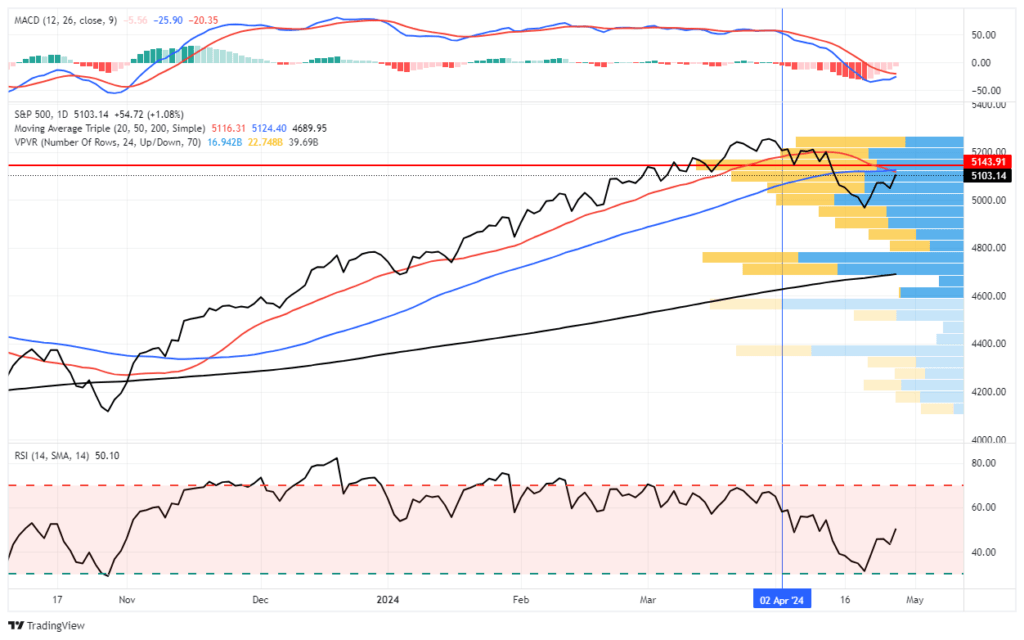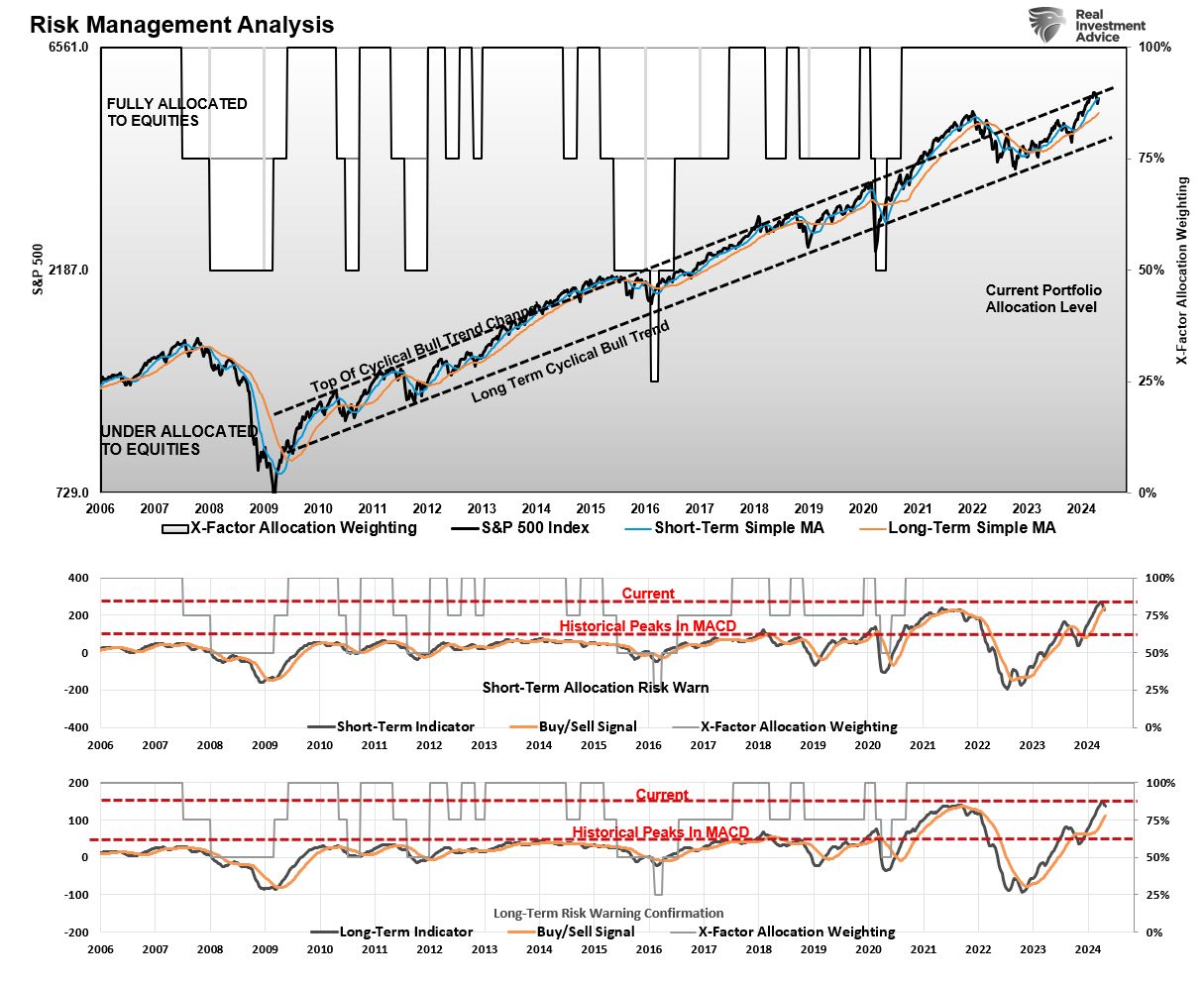Last week, we noted that a short-term stock rally was likely after the 5.5% sell-off from the recent peak. To wit:
“While it took longer than expected, that correction process arrived last week and continued earnestly, with the market falling to the 100-DMA. With the market short-term oversold, a reflexive rally in the next week is likely, with the 50-DMA being notable resistance. Investors should use any market rally toward 5100 to rebalance risk and hedge portfolios.“
On Friday, following blowout earnings from Google and Microsoft, the market did just by challenging the intersection of the 20- and 50-DMA. With the market not overbought yet and the MACD “buy signal” approaching, the bullish case is building. However, the initial resistance of the 50-DMA could prove challenging.

Continue to use the model allocations above to balance your holdings accordingly. As we recommended all of last year, continue to underweight small/mid-capitalization stocks, as well as with International and Emerging Markets. If we begin to see relative performance improving in those areas we will make a recommendation to increase those exposures. However, outside of brief spurts of performance, the longer-term holding returns for these markets remain dismal.
For now, continue to remain predominately weighted in US Large Cap (S&P 500) markets. Money flows, due to passive investing, will continue to keep those stocks elevated.
As we get further into the New Year, we will be able to better recognize where money and allocations are rotating to and make further recommendations for there.
If you are close to retirement or are concerned about a pickup in volatility, there is nothing wrong with being very underweight equities. It is better to be safe than to give up dreams of retirement to rebuild lost wealth.























